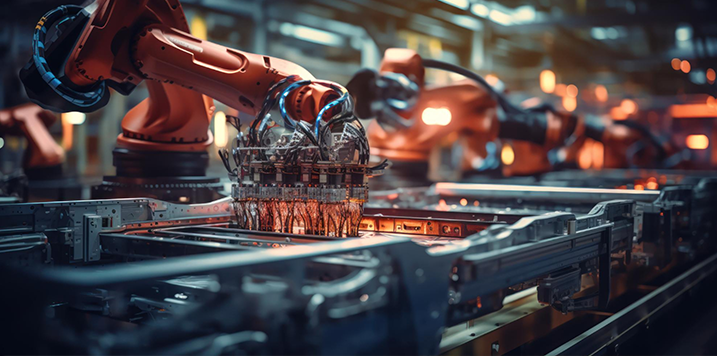 08 March, 2024
08 March, 2024The MECAPRES4.0 project, financed by the Basque Government through the ELKARTEK instrument, has come to an end with excellent results for all participants.
The industry has been demanding for years machines that work with high dynamics and that are precise and reliable. The machines evolve over time maintaining different behaviors during their life due to wear, maladjustments, aging of materials, etc. Maintaining high working speeds without losing precision is therefore a technological challenge.
The MECAPRES4.0 project has been working for the last two years on predictive mechatronic design technologies applied to smart industry. The unique approach of the project is that it has not been limited to working on the verification of the dynamic evolution of the machine and its effects on precision and reliability, but has also investigated how to transfer these impacts to the mechanical design and control phase of the machine.
MECAPRES 4.0 has worked on developing predictive design tools that, thanks to the combination of multiple technologies based on modeling and simulation, allow estimating, from the design phase, what will be the evolution of mechatronic systems throughout their life cycle and being able to intervene to correct the loss of performance.
The project has been led by IKERLAN with the participation of the Tekniker and Ideko technology centers, as well as Mondragon Goi Eskola Politeknikoa, the Department of Computer Science and Artificial Intelligence of the UPV-EHU and the Machine Tool Research Foundation (INVEMA).
Some of the main results of MECAPRES4.0 have been:
-
Métodos ágiles para determinar el comportamiento no ideal de mecanismos dinámicos y su variación en el tiempo.
-
Modelos para replicar la respuesta dinámica de actuadores hidráulicos.
-
Control inteligente capaz de adaptarse a diferentes comportamientos de máquinas, mejorando la eficiencia y robustez de estas.
-
Modelos virtuales de planta, equipos y componentes críticos, replicando su funcionalidad operativa y la degradación.
-
Capacidades de resiliencia para afrontar los impactos de cambios no previstos.
-
Algoritmos y métodos para estimar el desplazamiento del punto de corte en mecanizado mediante la combinación de un modelo teórico y señales experimentales.
-
Modelos mecatrónicos de accionamientos para simular modos de fallo y generar datos sintéticos para inteligencia artificial.
-
Modelos predictivos de la holgura en un banco de husillos mediante señales experimentales.
-
Modelos de simulación de actuadores piezoeléctricos y actuadores voice coil.
-
Aproximaciones para modelar la holgura y el rozamiento en accionamientos.
-
Estrategias de compensación de la holgura y el rozamiento.
-
Modelo híbrido de detección de descarga aleatoria en baterías de drones.
-
Metodología para detección del State of Health (SOH) de las baterías de drones.
-
Modelos para la detección y/o caracterización de anomalías para datos industriales de carácter complejo.
-
Metodologías para novelty detection (detección de anomalías que no aparecen durante el entrenamiento de modelos).
-
Métodos de búsqueda de arquitecturas de DNNs eficientes.
 08 March, 2024
08 March, 2024